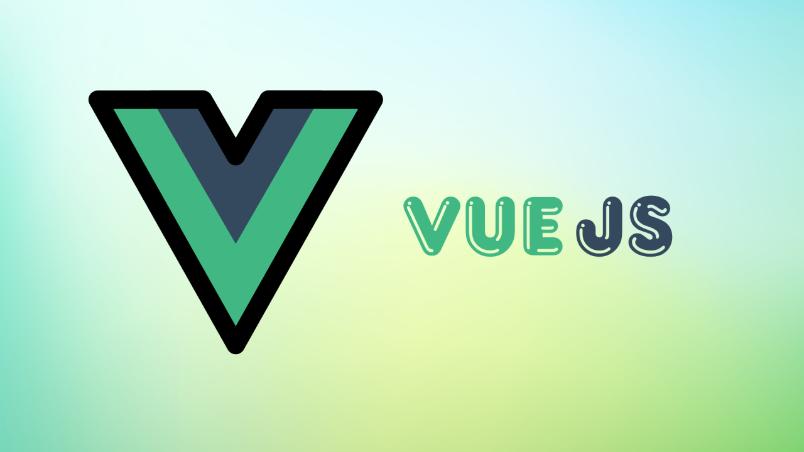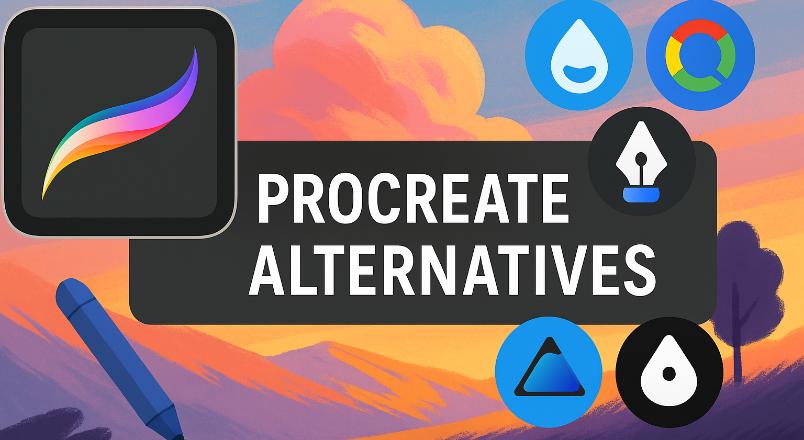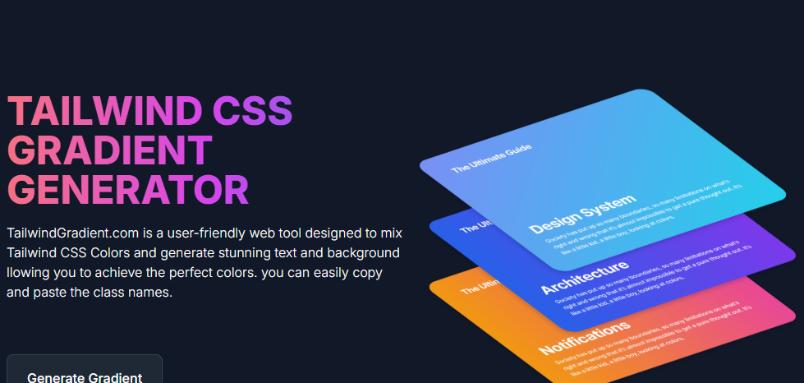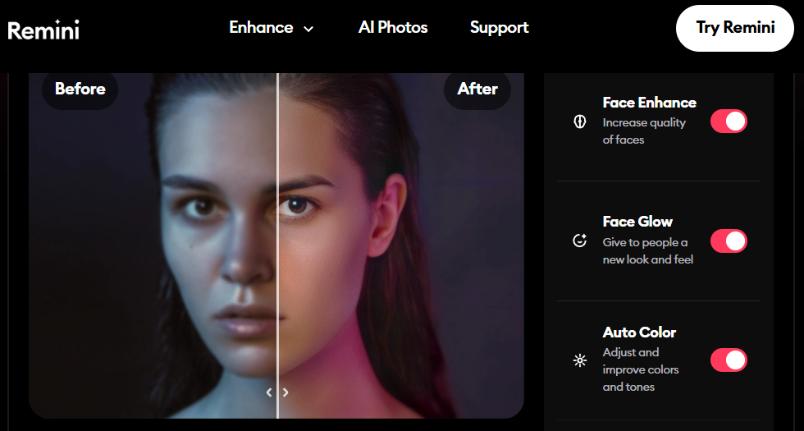Vue.js has grown into one of the most beloved frontend frameworks in the JavaScript ecosystem, known for its gentle learning curve and flexible architecture. But Vue’s true power lies in its rich ecosystem of frameworks and tools that enhance development productivity. Let’s explore the most significant ones that developers should know in 2025.
Nuxt.js: The Universal Vue Framework
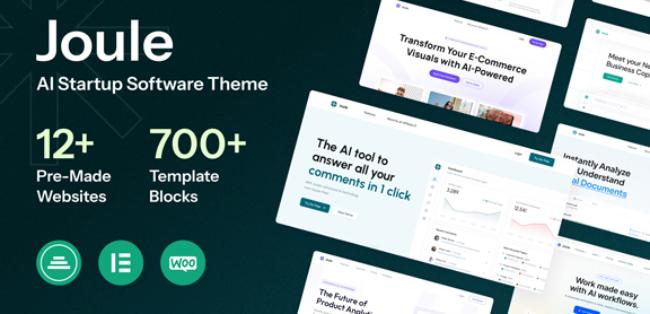
Nuxt.js has established itself as the premier meta-framework for Vue applications. It brings structure and conventions to Vue projects while offering multiple rendering modes: server-side rendering (SSR), static site generation (SSG), and client-side rendering.
Nuxt 3, released with full support for Vue 3 and TypeScript, has introduced a hybrid rendering system that allows developers to choose rendering strategies on a per-route basis. This flexibility makes it suitable for everything from dynamic applications to content-heavy websites.
The framework’s directory-based routing, automatic code splitting, and powerful data fetching capabilities significantly reduce boilerplate code. Its module system has fostered a rich ecosystem of first and third-party integrations, making it easy to add authentication, analytics, or CMS connections to your application.
Many developers appreciate Nuxt’s developer experience, including its hot module replacement, powerful CLI, and built-in performance optimizations. The framework continues to evolve rapidly, staying at the forefront of modern web development practices.
Quasar Framework: Cross-Platform Development
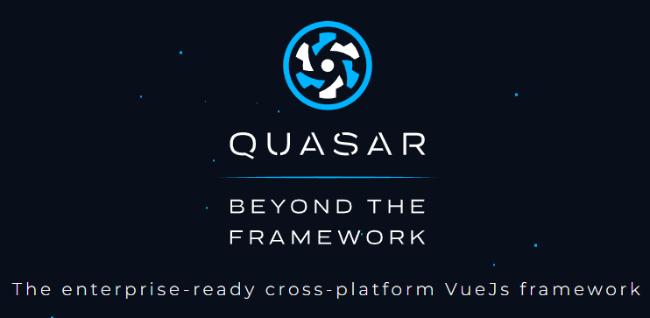
Quasar deserves special recognition for its comprehensive approach to cross-platform development. With Quasar, developers can write Vue.js code once and deploy it across multiple platforms: web, mobile (via Capacitor or Cordova), desktop (via Electron), and even browser extensions.
The framework includes a rich library of over 70 UI components built with Material Design principles, though they can be customized to match any design system. Each component is responsive and accessibility-focused, providing a solid foundation for professional applications.
Quasar’s CLI streamlines the development workflow with features like hot module replacement, code linting, and optimized builds. The framework also offers a unique feature called “Quasar App Extensions,” allowing developers to extend the functionality of the CLI and build process.
Performance is a key focus for Quasar, with tree-shaking and code-splitting built into its core. This results in applications that load quickly and run smoothly across devices, making it a favorite for enterprises building complex, multi-platform solutions.
Vite: The Next-Generation Build Tool
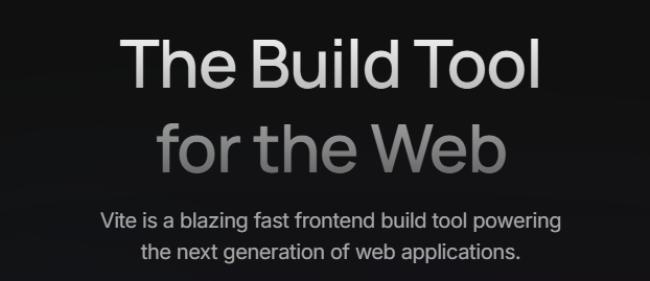
While not exclusively a Vue tool, Vite has become the recommended build tool for Vue projects, replacing webpack in many cases. Created by Vue’s founder Evan You, Vite leverages ES modules for near-instantaneous development server startup and lightning-fast hot module replacement.
Vite’s development server only compiles modules when they’re requested, eliminating the need to rebuild the entire application during development. This makes the development experience incredibly responsive, even for large applications.
For production builds, Vite uses Rollup to create highly optimized bundles. Its plugin system is compatible with many Rollup plugins, giving developers access to a wide range of tools for code transformation, bundling, and optimization.
The tool’s configuration is minimal yet powerful, with sensible defaults that work well for most projects. Vite also has excellent TypeScript support out of the box, further enhancing developer productivity.
Vuetify: Material Design Component Framework
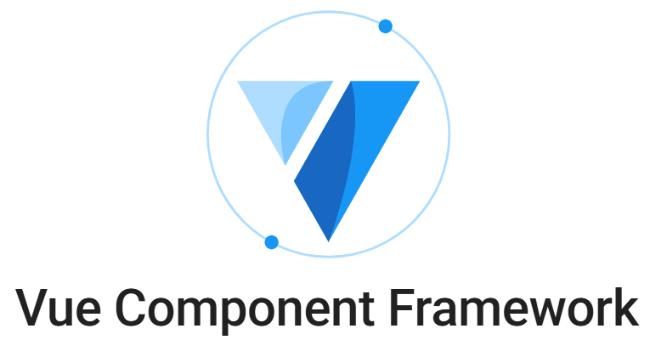
Vuetify is the most popular UI component library for Vue, offering a comprehensive implementation of Google’s Material Design specification. The library includes over 80 components, each meticulously crafted with attention to detail and accessibility.
Vuetify 3, compatible with Vue 3, introduced a new grid system, improved theming capabilities, and enhanced performance. The framework’s responsive components adapt seamlessly to different screen sizes, making it ideal for building applications that need to work across devices.
What sets Vuetify apart is its emphasis on customization. Developers can easily modify the default Material Design theme through Vuetify’s sophisticated theming system, allowing for unique brand identities while maintaining the framework’s core functionality.
The framework’s documentation is exceptional, with interactive examples and a playground where developers can experiment with components. Vuetify also offers premium support and consulting services for enterprises, making it a reliable choice for business-critical applications.
Pinia: State Management Evolved
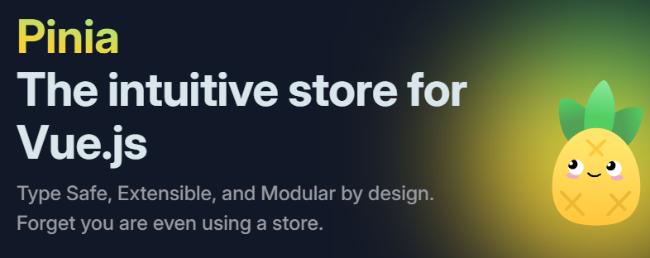
Pinia has replaced Vuex as the official state management solution for Vue applications. It offers a simpler, more intuitive API while maintaining compatibility with Vue’s reactivity system and developer tools.
What makes Pinia stand out is its TypeScript support and modular design. Stores are defined as modules that can be imported when needed, improving code organization and allowing for better tree-shaking. The library also supports multiple stores, making it easier to separate concerns in large applications.
Pinia eliminates the need for mutations, simplifying the state management model to just state, getters, and actions. This reduction in complexity makes the library more approachable for newcomers while still providing the power needed for complex state management scenarios.
The library’s integration with Vue DevTools offers excellent debugging capabilities, allowing developers to inspect state changes and track actions in real-time. Pinia’s lightweight nature also means it adds minimal overhead to applications, making it a performance-conscious choice.
Vue Router: Official Routing Solution
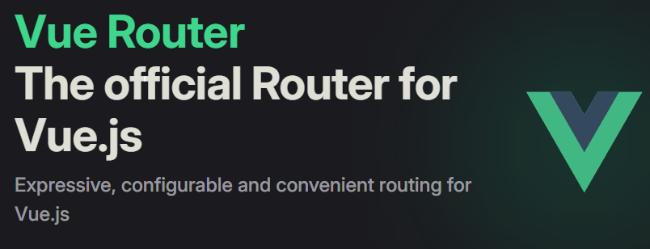
Vue Router remains the standard routing solution for Vue applications, evolving alongside the framework to support its latest features. Vue Router 4, designed for Vue 3, introduced composition API support and improved type safety.
The router’s dynamic route matching, nested routes, and navigation guards provide a solid foundation for building complex single-page applications. It also supports scroll behavior customization, allowing developers to create smooth, app-like navigation experiences.
Vue Router’s integration with Vue’s transition system makes it easy to add animations between route changes. The library also offers lazy loading of routes, improving initial load times by only loading the components needed for the current view.
Despite its comprehensive feature set, Vue Router maintains a small footprint and excellent performance. Its documentation is clear and thorough, making it accessible even to developers new to single-page applications.
Vitest: Unit Testing Framework
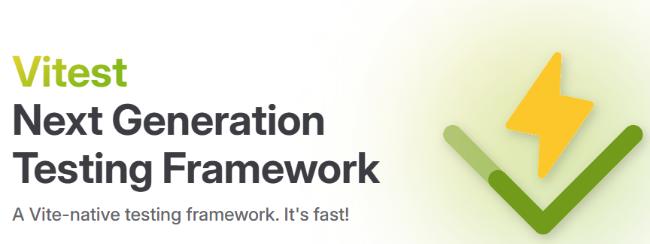
Vitest has emerged as the preferred testing framework for Vue applications, offering a Vite-powered alternative to Jest. This tight integration with Vite means Vitest inherits its speed and developer experience improvements.
The framework provides a Jest-compatible API, making migration from Jest straightforward. It supports both unit and component testing, with the ability to mock modules, spy on functions, and assert on component behavior.
Vitest’s watch mode is particularly impressive, leveraging Vite’s HMR to provide near-instantaneous feedback during test-driven development. The framework also offers built-in code coverage reporting and a UI for visualizing test results.
What sets Vitest apart is its support for testing components in isolation using the same environment as the application. This reduces the mismatch between test and production environments, leading to more reliable tests.
VueUse: Composition Utilities
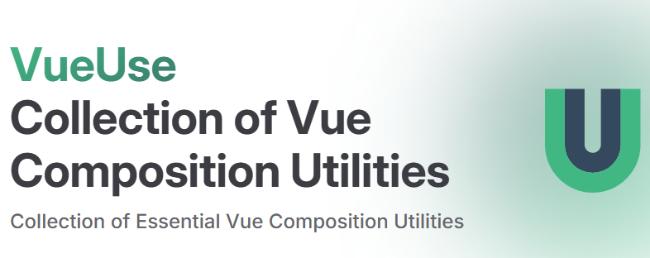
VueUse has become an essential collection of composable utilities for Vue applications. It provides over 200 functions that address common needs in web development, from state management to sensor access.
The library is designed around Vue’s composition API, with each function returning reactive references that can be used in components. This approach promotes code reuse and separation of concerns, leading to more maintainable applications.
VueUse’s modular structure allows for tree-shaking, ensuring that only the functions used are included in the final bundle. The library is also fully typed, providing excellent autocomplete and type checking in IDEs.
What makes VueUse particularly valuable is its coverage of browser APIs. Functions for interacting with the clipboard, geolocation, and media devices are all available, each with a simple, reactive interface that integrates seamlessly with Vue components.
PrimeVue: Enterprise UI Component Library
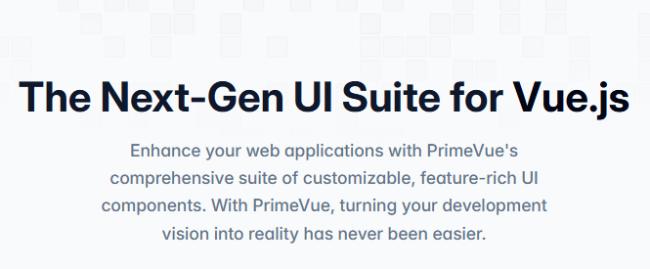
PrimeVue stands out as a comprehensive UI component library specifically designed for business applications. With over 90 flexible components, it offers everything from data tables and charts to complex form elements and workflow wizards.
What distinguishes PrimeVue is its focus on enterprise needs. The data grid component, for instance, includes features like sorting, filtering, grouping, and export capabilities out of the box. These features typically require significant development effort to implement from scratch.
The library offers multiple built-in themes and a theme designer tool that allows developers to create custom themes that match corporate branding requirements. All components are also designed with accessibility in mind, ensuring applications can be used by people with disabilities.
PrimeVue’s premium templates and application frameworks further accelerate development by providing pre-built application skeletons with authentication, navigation, and common layouts already implemented. This makes it particularly valuable for teams working under tight deadlines.
Volar: Enhanced IDE Experience
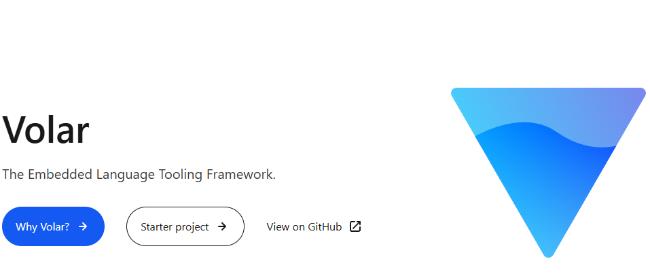
Volar has revolutionized the Vue development experience in Visual Studio Code. As the official Vue language server, it provides intelligent code completion, type checking, and refactoring tools specifically designed for Vue’s single-file components.
The extension’s TypeScript integration is particularly impressive, offering accurate type inference between template, script, and style blocks. This leads to fewer runtime errors and a more confident development experience, especially in larger codebases.
Volar also enhances the developer experience with features like component preview, jump-to-definition for components, and smart template diagnostics. These tools help developers understand and navigate complex Vue applications more effectively.
With support for Vue 3’s script setup syntax and TypeScript, Volar makes adopting these modern features more accessible by providing clear error messages and helpful suggestions. Its performance has also been optimized for large projects, ensuring the IDE remains responsive even when working with hundreds of components.
Storybook for Vue: Component Development Environment
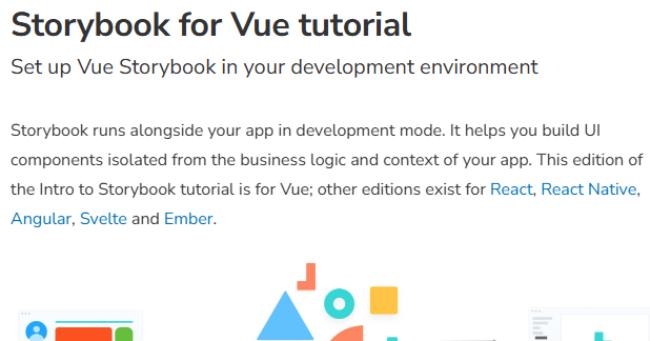
Storybook has become an essential tool for Vue component development, providing an isolated environment where developers can build and test UI components independently of the main application.
The Vue addon for Storybook offers specific features tailored to Vue development, including support for single-file components, composition API, and Vue-specific props documentation. This integration makes it easier to showcase components in different states and variations.
What makes Storybook particularly valuable is its ability to serve as living documentation. Developers can write stories that demonstrate how components should be used, serving as both examples for other team members and as visual regression tests when combined with snapshot testing tools.
The tool’s addon ecosystem extends its functionality with features like accessibility testing, responsive design tools, and design system integration. These addons help ensure components meet quality standards before they’re integrated into the main application.
Vite PWA: Progressive Web App Plugin
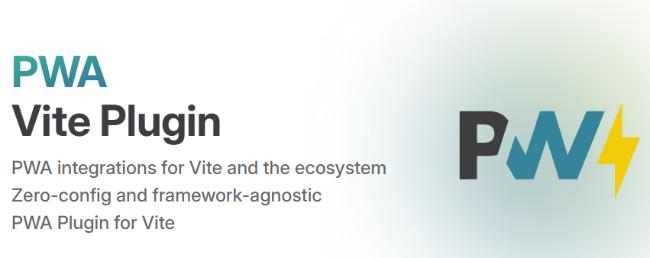
The Vite PWA plugin has simplified the process of turning Vue applications into Progressive Web Apps (PWAs). It integrates service worker generation, manifest creation, and asset caching strategies directly into the Vite build process.
What sets this plugin apart is its sensible defaults combined with extensive customization options. Developers can quickly add PWA capabilities to their applications with minimal configuration, while still having the flexibility to fine-tune caching strategies for specific resources.
The plugin supports both development and production modes, with features like automatic service worker updates and offline fallback pages. It also integrates with modern PWA features like web push notifications and app installation prompts.
As PWAs continue to gain importance in the web development landscape, this plugin has become an essential tool for Vue developers looking to create applications that work reliably across devices and network conditions.
Cypress: End-to-End Testing Framework
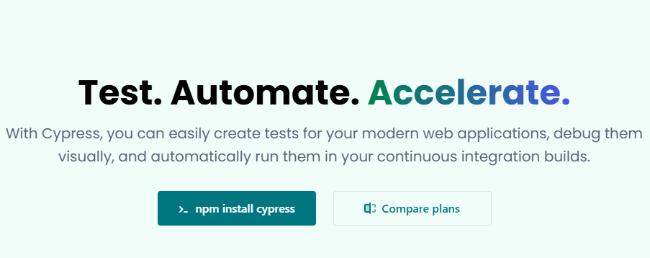
Cypress has emerged as the leading end-to-end testing framework for Vue applications, offering a developer-friendly approach to automated testing. Its unique architecture runs tests in the same run loop as the application, providing more reliable tests with fewer flaky results.
The framework’s Vue integration is excellent, with the ability to access component instances, props, and state during tests. This makes it possible to test not just visual outcomes but also the underlying logic and state management of Vue applications.
Cypress’s time-travel debugging feature is particularly valuable for complex applications. It allows developers to see exactly what happened at each step of a test, making it easier to diagnose failures and understand application behavior.
The tool’s comprehensive documentation and active community have made it accessible to developers who might have previously avoided end-to-end testing due to its complexity. As testing becomes increasingly important in professional Vue development, Cypress has become an essential part of many teams’ toolkits.
Histoire: Component Documentation

Histoire is a newer addition to the Vue ecosystem, focused specifically on component documentation and exploration. Created by the same team behind Vite, it offers a faster, more streamlined alternative to Storybook for Vue 3 projects.
What makes Histoire stand out is its tight integration with Vue’s ecosystem. It works seamlessly with Vue 3’s composition API and script setup syntax, and leverages Vite for near-instant startup and hot module replacement.
The tool’s auto-discovery feature automatically finds and documents components in a project, reducing the boilerplate code needed to create stories. Its theme system is also fully customizable, allowing teams to create documentation sites that match their brand identity.
Histoire’s focus on simplicity and performance makes it particularly appealing for teams that found Storybook too complex for their needs. As component-driven development continues to gain popularity, tools like Histoire play a crucial role in building and maintaining design systems.
TresJS: 3D Graphics Framework
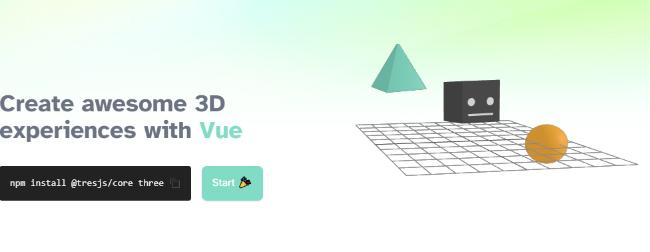
TresJS has emerged as the leading solution for integrating 3D graphics into Vue applications. Built on top of Three.js, it provides a declarative, component-based approach to creating complex 3D scenes and interactions.
What makes TresJS special is how it bridges the gap between Vue’s reactive programming model and the imperative nature of 3D graphics. Developers can use familiar Vue patterns like props and computed values to create dynamic 3D experiences that respond to user input and application state.
The framework includes a growing collection of composables and components that simplify common 3D tasks like lighting, camera controls, and material creation. This abstraction layer makes 3D development more accessible to Vue developers who might not have extensive graphics programming experience.
As web-based 3D experiences become more common in product visualization, data visualization, and interactive storytelling, TresJS provides Vue developers with the tools needed to create engaging spatial experiences without leaving the comfort of the Vue ecosystem.
Conclusion
Vue’s ecosystem continues to evolve and mature, offering developers a comprehensive set of tools for building modern web applications. From Nuxt’s universal rendering to specialized tools like TresJS for 3D graphics, each framework and tool addresses specific needs while maintaining Vue’s core philosophy of progressive adoption.
As we move further into 2025, we can expect these tools to continue evolving, with a focus on performance, developer experience, and integration with the broader JavaScript ecosystem. For developers working with Vue, staying familiar with these frameworks and tools is essential for building efficient, maintainable applications that meet today’s complex requirements.

